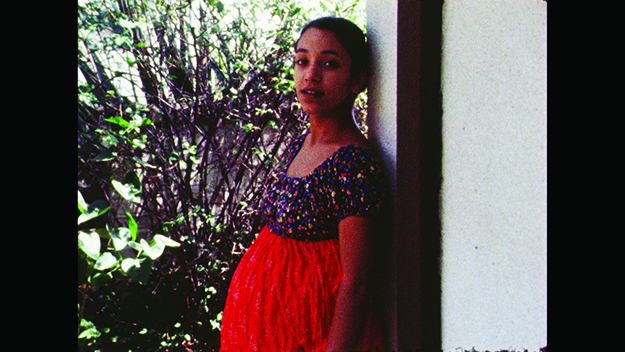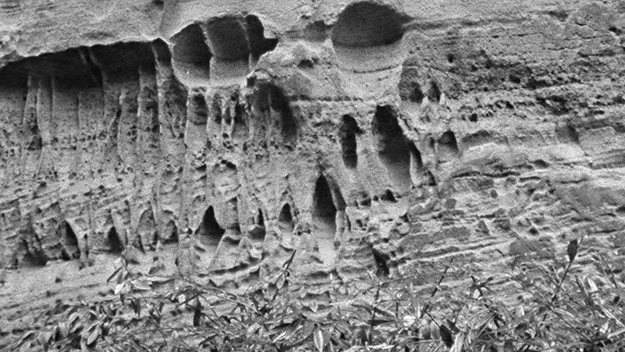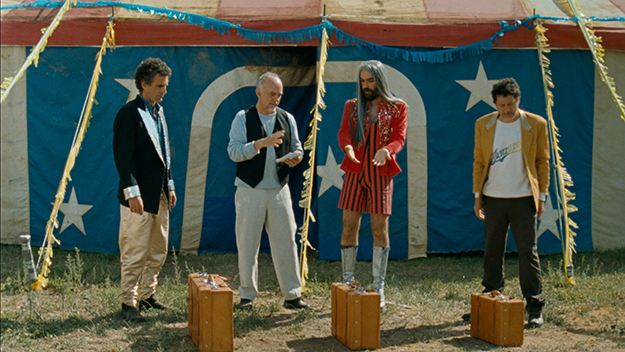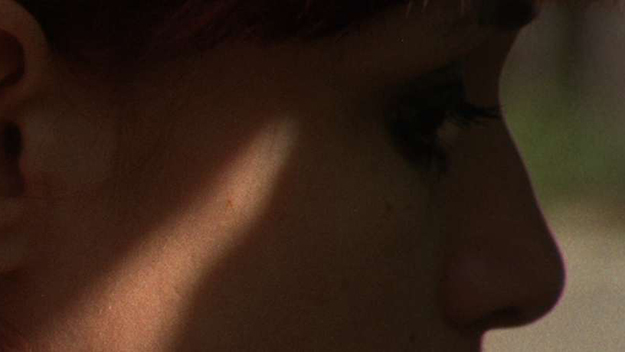Dispatch: FIDMarseille 2019

Nunca subí el Provincia (Ignacio Agüero, 2019)
As befits a festival specializing in documentary cinema with porous boundaries, the 30th edition of FIDMarseille rubbed shoulders with a media event all but unrelated to the cinema: the semi-final of the 2019 Africa Cup of Nations. In this city with large Tunisian and Algerian populations, there was a special kind of charge in the air. Whereas film festivals often feel cloistered from the outside world, the twin spectacles of football match and sometimes violent Bastille Day celebrations were impossible to ignore in Marseille, even in the space of the cinema itself. Explosions—presumably fireworks—periodically rocked theaters on the night of July 14, shuddering in the heavy air like muffled peels of thunder. Leaving the cinema late that night, I walked cautiously past an army of hulking riot police buckling thick plastic shields onto their arms and strapping on helmets and visors, there to violently enforce order on a national holiday rocked by protest. In front of the café next to them, 50 or more Algerian football supporters formed a crescent around a distant 25-inch television blaring out the match. Despite the chaos around them, these supporters were as transfixed by the game as they had been when I’d slipped past into the movie an hour before.
Other than Vincent Meesen’s Ultramarine—an airtight musical fantasia in which Kain the Poet reads from his work, accompanied by wild, spasmodic drumming—all the notable films at FIDMarseille played fast and loose with the outer limits of their fictions: flubbed clapperboards, slip-ups, mistakes, diversions, improvisations. With a line-up of such open-ended films, it was as if the screen could barely contain the energies of these films’ protagonists. This was also true for the worst the festival had to offer. In other circumstances and in the hands of lesser artists, these gestures of incompleteness registered loudly, again and again, as affectations that grated on the viewer.
Undoubtedly the best new film I saw at the festival, Pierre Léon and Rita Azevedo Gomes’ Danses Macabres, Squelettes et autre fantasies, consists of several languorous conversations between the directors, the crew, and writer and art critic Jean-Louis Schefer (indeed, he is credited for his enormous verbal contribution to the film as a third co-director). Conversation moves freely, guided by the whims of thought. What Léon, Gomes, and Schefer preserve is an ever-evolving thought process—namely Schefer’s, as he holds court on certain paintings by Bosch and passages from Virginia Woolf in galleries, on visits to historical sites, and in a summer home near the sea. These discussions unfurl naturally in elegant long shots that situate the speaker in their place, giving the film a sense of gravity characteristic of Gomes’ previous work in particular. Though it consists entirely of interviews with an intellectual figure holding forth on a single subject, Danses Macabres does not play as an investigation into pre-determined questions; the space around words seems to incubate thought itself and guide us through this terrain. This is rare in contemporary documentary, where the impulse often is to editorialize. Above all, it is a privilege all too rare to share a couple of hours of good conversation with several agile minds, Schefer’s—whose intellectual energy guides the film—in particular.
In Nunca subí el Provincia, winner of the festival’s top prize, filmmaker Ignacio Agüero crafts a portrait of his neighbourhood over the span of an unspecified number of years, flatly recording the walkways and street corners of a small suburb in Santiago, Chile in low-rent digital. Like many lesser films at FIDMarseille and on the documentary scene at large, the movie is cobbled together out of diffuse elements from the filmmaker’s quotidian life and a range of shooting formats. He includes archival footage and home movies in both 16mm and digital. In footage shot on a consumer-grade camera, he follows the same group of geriatrics hobbling back and forth from the shops and supermarkets and witness storefronts transform time and again as years slip by. Agüero mumbles on the soundtrack. “You’re a made-up recipient, he later admits. “I write only to write.” Despite all this, you feel the presence of a guiding hand shaping the material. Agüero’s portrait of the changing face of a neighbourhood doubles, like Danses Macabres, as a living study of the thought process of an artist, in this case meditating on and reimagining the spaces around him through images, places that in turn are eroded and reshaped by the winds of gradual societal change.

Ghost Strata (Ben Rivers, 2019)
In contrast to Agüero’s use of digital, Ben Rivers remains very much a 16mm filmmaker, even when working in a diaristic register as in Ghost Strata. Rivers’s latest is a 12-part collection of monthly sounds and images that he amassed throughout 2018. Unlike Agüero, who takes the images he produces quite simply for what they are, finds in them their own functional or textural beauty, and then sets to arrange them according to a concealed logic that only he is privy to, Rivers puts an enormous amount of work into conceiving each image and each scene as something with its own vibrancy and internal cohesion.
Beginning with a tarot reading shot in close-up for its entirety—tight shots of the cards themselves, passing over to the tablecloth, the hairs on the fortune teller’s arms lit-up by golden sunlight—Rivers sets up a playful contrast between a soundtrack of imperfections with perfect images often of great delicacy, to regenerative effect. Whenever the image borders on picturesque, he counterpoints it with, for example, found audio layered onto the soundtrack. In a notable scene, Rivers’ girlfriend Renee giggles through a Wikipedia biography of the philosopher Pherecydes while standing (off-screen) in Pherecydes’ cave, her infectious laughter adding another dimension to the biographical information she struggles to get through.

Derechos del hombre (Juan Rodrigañez, 2018)
Even in Juan Rodrigañez’s amazing Derechos del hombre—the most “fictional” of the great films at this year’s FID, with its self-contained story and main actors playing “characters”, however freely—the structure feels less decreed and demarcated in advance than composed from self-perpetuating organic elements. The film concerns itself with a circus troupe, the stars and co-authors of his first film The Money Complex, rehearsing and preparing for an elaborate show to be called Gran Circo, somewhere in the Meseta Central Region of Spain. Shooting in 16mm like Rivers, Rodrigañez has an intuitive understanding of when to move his camera and when to let the subjects move within a locked-off frame, resulting in many images of extraordinary depth and shimmering, sun-baked splendour. The expansive nature of the game of fiction-making, as the circus performers invent their own routines and fantasise themselves as solitary mages with—quite literally—the power to bend space and time. The actual physical energies of the performers are quite something to behold in a film in which each scene and each circus routine feels like it is bursting at the seams.
Like Ghost Strata, Portuguese filmmaker Leonor Noivo’s also-16mm Raposa asserts the beauty of routine encounters with the world through celluloid images that give gravity to gestures. The movie is only thinly veiled in fiction; Noivo trains her camera on the meticulous meal planning of an anorexic (played by co-writer Patrícia Guerreiro)—weighing herself, apportioning ingredients, cataloguing emotional states as diary entries. Raposa affirms this frailest of presences as she struggles inch-by-inch, second-by-second to put in the nuts-and-bolts work of survival. In one sequence, the main character makes a plaster cast of her body; the metaphorical thrust of this gesture is obvious, but the hands that assist in plastering the material to her skin—slowly pressing the strips of damp fabric onto her body, exposing its curves and contours—transform it into a quasi-erotic act, upholding her again as a physical presence above all.

Raposa (Leonor Noivo, 2019)
Likewise, the scenes where Guerreiro’s character watches a movie screen in a gallery onto which cartoonish images of women in pain are projected are, like many of these digressions, a little abstract. Nonetheless, they help to reframe what could otherwise be another well-worn study of long-suffering people entombed by routine. In other words, Guerreiro-Noivo are not only asserting a real struggle (Guerreiro’s, who also suffers from anorexia) in images—forcing an audience to confront them—but confronting mediated images of pain inflicted onto other women.
In the world of documentary film festivals, the division between non-fiction and fiction has never been so fashionable to traverse and openly flaunt as a filmmaking gesture. In that sense, this festival could be seen as a victim of its own success and longevity. But what still distinguishes the films at FIDMarseille was their power to continue to live on for hours and hours after the credits rolled. Wasn’t it Orson Welles who said that the mark of a good movie is that it only begins once you leave the cinema?
Christopher Small is a writer and filmmaker living in the United Kingdom. He is the Project Manager of the Locarno Critics Academy.







